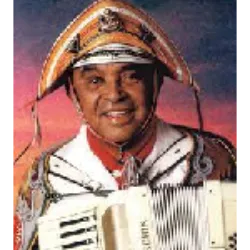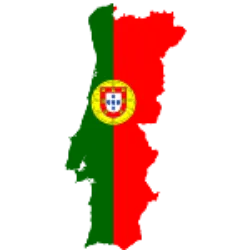The Rio Sambadrome and Its Creator

Before the construction of the Marquês de Sapucaí Sambadrome, the Rio de Janeiro samba school parades took place in different locations around the city, such as Avenida Rio Branco and Presidente Vargas. However, as Carnival grew and the number of spectators increased, the need for a permanent venue to host the show arose.
In 1983, the then governor of Rio, Leonel Brizola, commissioned a project from renowned architect Oscar Niemeyer to create a permanent structure for the parades. Niemeyer designed the Marquês de Sapucaí Sambadrome, which opened in 1984. The space has permanent grandstands along the avenue and exclusive boxes, providing a unique experience for the audience.
The Sambadrome is not only the stage for the largest Carnival in the world, but also a space for culture and education. Throughout the year, it houses the Municipal School of Arts, known as "Sambódromo CIEP", which offers education to children from the region. In addition, it has hosted major events, such as international concerts and even sports competitions at the 2016 Olympics.
Since its inauguration, the Sambódromo has become an icon of Rio's Carnival, immortalizing unforgettable moments and keeping the tradition of samba schools alive. With its imposing and symbolic structure, it continues to be one of the most important stages of Brazilian culture.
The Emergence of the Drum Queen

The Drum Queen is one of the most iconic figures of Brazilian Carnival, parading in front of the percussionists and bringing charm, energy and charisma to the parade. This tradition began in the 1970s, when Adelaide Amaral, from the Acadêmicos do Salgueiro samba school, became the first woman to officially occupy the position. Before that, the role of leading the drum section was performed by the drum masters or prominent dancers, but over time, women gained their place.
The success of the Drum Queen grew rapidly and, in the 1980s and 1990s, celebrities began to take on the position, making it even more competitive. Actresses, models and TV personalities began to represent the schools, bringing visibility and glamour to the parades. Even with the presence of celebrities, many schools keep their queens chosen from within the community itself, valuing samba dancers who grew up in the Carnival environment.
Being a Drum Queen requires more than beauty and fame. In addition to the responsibility of representing the school, it requires dedication, intense rehearsals and a strong connection with samba. Some queens have become legendary, such as Luma de Oliveira, Viviane Araújo and Gracyanne Barbosa, who left their mark on the era with unforgettable performances.
Test yourself with one of these challenges 👇
Discover some interesting facts about Carnival in Brazil
Unidos da Tijuca is one of the most emblematic samba schools in Rio de Janeiro

Unidos da Tijuca is one of the most emblematic samba schools in Rio de Janeiro. Founded in 1931, it originated from the union of blocks in Tijuca, specifically on the hills of Casa Branca, Formiga, Borel and Ilha dos Velhacos. The visual identity of Unidos da Tijuca is marked by the colors blue and yellow-gold, adopted since its foundation. In 1984, the royal peacock was chosen as the school's symbol, replacing the previous one, which was composed of two intertwined hands surrounded by branches of coffee and tobacco.
The Vitória Régia Samba School

The Vitória Régia Samba School is one of the oldest and most emblematic carnival groups in Manaus, located in the capital of Amazonas. Founded on December 1, 1975, in the residence of "Tia" Lindoca, in Praça 14 de Janeiro, the school is known as the "Cradle of Samba" in the city. Their first rehearsals took place in the courtyard of Tia Lindoca's house and, later, in 1989, they conquered a covered court near the Nossa Senhora de Fátima Church, on Rua Emílio Moreira. Throughout its history, Vitória Régia has accumulated several titles and paid homage to significant aspects of local culture and history in its parades. With official colors of green and pink, inspired by Estação Primeira de Mangueira in Rio de Janeiro, the school is a notable institution not only for its performance at Carnival, but also for its cultural and social importance in the community of Praça 14 and its surroundings.
Vila da Barra is a samba school based in the city of Manaus, in Amazonas

Vila da Barra is a samba school based in the city of Manaus, in Amazonas, Brazil. Located on Avenida Brasil, in the Compensa neighborhood, close to the city hall, in the West Zone, it is one of the most vibrant representatives of carnival culture in the region. Founded on May 21, 1995, it had its first official parade in 2008, in the newly created Group 3, winning runner-up with a tribute to the West Zone of Manaus. Over the years, Vila da Barra has gained a solid base of members and fans, becoming a reference in samba culture in Manaus. With a lively drumline, well-rehearsed wings and elaborate floats, Vila da Barra always seeks to impress the public and judges during the parades.
Grêmio Recreativo Escola de Samba Unidos do Alvorada

Grêmio Recreativo Escola de Samba Unidos do Alvorada is one of the traditional samba schools in Manaus, located in the state of Amazonas, Brazil. Founded in 1995, from the former Banda do Jacaré, the school has its headquarters on Rua São Bernardo, close to Prosamim, in the Alvorada neighborhood. Since its foundation, Unidos do Alvorada has been a strong presence at the Manaus Carnival, bringing creative plots and actively participating in local competitions. In its parades, Unidos do Alvorada has already paid tribute to several relevant personalities and themes, such as the toada raiser David Assayag, the UFC fighter José Aldo and northeastern culture.
The Samba School United Kingdom of Manaus

The Samba School United Kingdom of Manaus is a renowned carnival group based in the city of Manaus, Amazonas. Founded on September 5, 1981, during a meeting of friends in the Morro da Liberdade neighborhood, the school had its origins on Santa Rosa Street, in the residence of one of the founders, known as Pirulito. Initially, it emerged as a street block called Unidos do Morro. Over the years, Reino Unido de Manaus grew and consolidated, becoming a samba school in 1986 and reaching Grupo Especial in 1987, when it adopted its current name. One of the striking features of the United Kingdom of Manaus is its court, known as Terreirão do Samba Mãe Zulmira Gomes, located on Alameda São João. The club is also recognized for its memorable plots, such as the samba about Mãe Zulmira, popularly known as " Axé Mãe Preta".
Test yourself with one of these challenges 👇
HOME










